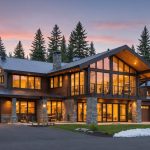Understanding Urban Green Spaces
Urban green spaces are key elements of urban planning, providing a range of benefits from increasing real estate value to promoting biodiversity. They include parks, gardens, greenways, and rooftop gardens. These spaces are often used for recreation, community gatherings, and environmental improvements.
Historically, the development of green spaces in cities has been essential to urban planning. For example, Central Park in New York, designed in the 19th century, was among the first urban parks in the U.S. This historical significance highlights the ongoing necessity to balance urbanization with accessible natural spaces.
In parallel : Transforming cityscapes: how innovative landscape design can boost urban biodiversity in new real estate projects
Recent trends in urban green space design aim to integrate nature more thoroughly into urban environments. Innovations like vertical gardens, eco-bridges, and the use of native plant species help create sustainable, resilient cities. Urban planners are now considering how these spaces can address modern challenges, such as climate change and urban heat islands.
Incorporating urban green spaces effectively requires detailed urban planning and community involvement. By valuing and enhancing these green spaces, cities can not only boost real estate value but also improve the quality of life for their residents. Such spaces reinforce the connection between urban settings and the environment, making them indispensable urban components.
Also to discover : Unlocking investment opportunities: key factors for real estate near transit hubs to enhance your property value
The Economic Impact of Urban Green Spaces
Urban green spaces are not merely areas of relaxation and recreation; they are powerful drivers of economic benefits within cities. One significant advantage is their influence on property values. Homes and commercial properties near these verdant areas often enjoy a boost in market value. This is largely due to the enhanced desirability and improved quality of life these spaces offer.
Influence on Property Market Values
Research shows a positive correlation between proximity to green spaces and increased home prices. Statistical evidence suggests that properties close to parks, gardens, and other green areas can see a price increase of up to 15%. This makes the initial investment in green spaces highly beneficial in the long term.
Statistical Evidence and Case Studies
Multiple studies have illustrated these gains. For instance, in New York City, properties within a half-mile radius of Central Park are estimated to command a premium ranging from 8% to 30%, depending on the location and type of property. These figures underscore the importance of incorporating green spaces into urban design.
Successful Urban Development
Cities like Singapore are exemplary models, where integrated green spaces have significantly uplifted real estate market trends. The economically savvy approach to urban development firmly roots itself in the symbiotic relationship between nature and city living, showcasing how strategic planning can lead to substantial economic growth.
Environmental Benefits of Urban Green Spaces
Urban green spaces play a crucial role in promoting biodiversity and enriching urban ecosystems. These lush environments serve as habitats for various species, fostering a harmonious coexistence between nature and urban life. By integrating native plants and diverse species, cities can bolster their ecological networks, which is essential for sustainability in urban areas.
Green spaces also significantly enhance air quality. Trees and vegetation naturally filter pollutants, absorbing carbon dioxide, and releasing oxygen, thereby improving the air that urban dwellers breathe. This process reduces the harmful environmental impact associated with urban pollution. Moreover, these spaces aid in climate regulation by maintaining cooler temperatures through shade and evapotranspiration, which can substantially offset the heat generated by city infrastructure.
The importance of green spaces further extends to combating the urban heat island effect. Cities often experience higher temperatures than their rural counterparts due to human activities and infrastructure. Urban greenery helps mitigate this by providing cooler surfaces and shading, thus reducing extreme heat exposure. This makes the city environment more bearable and contributes to overall sustainability by lessening the energy demand for cooling.
By integrating well-planned green spaces into cityscapes, we can create urban areas that are not only more liveable but environmentally responsible and sustainable.
Social and Health Benefits of Green Spaces
Access to green spaces offers numerous benefits for both community engagement and individual well-being. These areas, especially urban parks, play a vital role in promoting community cohesion and fostering relationships among residents. Promoting interaction and shared experiences, green spaces enhance social cohesion by providing environments conducive to community-building activities.
Urban Parks and Mental Health
Spending time in urban parks has a significant impact on mental health. Research indicates that regular exposure to nature reduces stress levels, enhances mood, and boosts overall psychological well-being. Furthermore, these benefits are not limited to mental health; parks also encourage physical activity, leading to improved physical health. Walking, jogging, or engaging in group sports within these public spaces contribute to a healthier lifestyle, further reinforcing their importance.
Community Engagement Through Green Spaces
Green spaces actively encourage community engagement. Public spaces become venues for social events, cultural activities, and various community-driven initiatives, engendering shared experiences and stronger bonds within the community. This interaction not only strengthens social networks but also enhances residents’ sense of belonging.
Overall, green spaces serve as essential elements of urban living, demonstrating a profound connection between environmental settings and the well-being of communities.
Expert Insights and Analyzing Future Trends
Expert opinions from urban planners and real estate experts highlight the transformative potential of integrating green spaces into urban landscapes. As cities evolve, there is a growing emphasis on innovation in green space development. Urban planners focus on creating multifunctional areas that serve both recreational and ecological purposes. This reflects the changing landscapes of urban design, where sustainability and livability become paramount.
Future developments in urban green space integration are expected to lean heavily on technology. Smart solutions like IoT devices and data analytics are predicted to revolutionise how these spaces are maintained and utilised. For instance, sensors could monitor soil moisture levels to optimise watering systems, promoting efficient resource management. This innovative approach ensures cities not only expand their green spaces but do so in a sustainable and cost-effective manner.
Looking ahead, the role of innovation is crucial. Real estate experts suggest that these developments will lead to greener urban centres, enhancing property values through increased accessibility to leisure spaces and improved air quality. As cities face the challenges posed by climate change, embracing innovation in green space development emerges as a practical solution for creating resilient and vibrant urban environments. These trends promise improved quality of life in bustling cityscapes.
Strategies for Maximizing Property Value with Green Spaces
Enhancing property value is a significant goal for property investors and developers alike. One effective approach is integrating green spaces through targeted landscaping strategies. This involves not only the creation of new green areas but also the maintenance and improvement of existing ones.
To increase property appeal, it’s essential to have a multifaceted approach to property development. First and foremost, maintaining well-groomed lawns and gardens can enhance the aesthetic value, making properties more attractive to potential buyers. Incorporating seasonal plants and native species can further boost the property’s eco-credentials, appealing to environmentally conscious buyers.
Successful examples from various landscaping strategies include transforming unused rooftop spaces into lush gardens or installing vertical green walls. These innovations serve a dual purpose: improving air quality and creating a visually appealing environment. Moreover, incorporating water features, such as small ponds or fountains, can add a sense of tranquility, thus increasing property attraction.
Investors and developers must understand the importance of green spaces in value enhancement. These areas provide multiple benefits, such as increasing biodiversity, reducing urban heat, and offering recreational spaces for homeowners. Incorporating green spaces effectively into property developments not only benefits the environment but also significantly drives up property values, creating a win-win scenario for both developers and the community.













